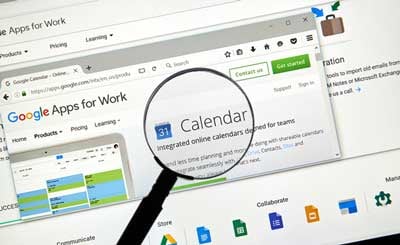 The thought of juggling one more calendar may turn you off completely. That is understandable. After all, you have a lot on your plate as it is.
The thought of juggling one more calendar may turn you off completely. That is understandable. After all, you have a lot on your plate as it is.However, rather than adding an additional burden to your day-to-day operations, a good content calendar actually saves time, money, and major amounts of stress for your entire digital marketing team. Let's take a quick look at what a content calendar is and what it can do for your organization.
Bringing Order to Chaos
More than ever before, digital marketing today is a multi-channeled endeavor. Your marketing campaigns likely span multiple platforms, including your blog, landing pages, social media content, and so on. With the sheer number of places you create content, it is all too easy for one or more of your channels to fall through the proverbial cracks.What you need, then, is a way to bring order to digital marketing chaos, a way to see your content plans holistically. Enter that most useful of tools, the content calendar.
Simply put, your content calendar is a schedule of when, what, and where you will post content. Mailchimp puts it nicely, observing: "Your content calendar is a framework for the ongoing story you want to tell about your business. When you take a holistic view of your social media or email marketing output, you can turn ideas and broad strategies into an actionable plan that can be tweaked as you learn more about what works best."
Your content calendar, then, is almost like a storyboard for your target audience. Its purpose is to help you see how to advance the story in a logical, coherent, cohesive way.
Why It Works for Digital Marketing
It is highly likely that you have a huge list of items you want your target audience to know. But good storytelling is never haphazard. A content calendar enables you to lay out your story systematically. Since your brand story will be told across multiple channels, this is incredibly important.Ideally, your target audience is connecting with you via your blog, social media messaging, and email campaigns. Your content calendar spans all these avenues of communication, ensuring that your messaging stays on point and moving forward in a logical way.
MarketingProfs.com compares building out a content calendar to building a house. Just as every house starts with a blueprint, your content calendar is the blueprint for content creation. But how do you go about making a content calendar?

How to Do It
For the actual nuts and bolts of your content calendar, HubSpot recommends using a Google Editorial Calendar template. You can read more about the step-by-step instructions for using the free Google template here. For now, however, consider the larger picture of how to craft a content calendar.
Once you have a template downloaded, you will need to fill in the blanks. First, you will discern what content your audience wants and needs to know. In other words, brainstorm some basic ideas regarding content relevant to your audience. Use your marketing research as a springboard.
When you have a broad idea of the content you want to share, consider where and how you want to share it. How often do you want to post a new blog? When will you be posting items to social media platforms? How can you time your content to coincide with any paid media you intend to use?
Next, you will determine who needs to create the content. This is an area wherein an editorial calendar really shines. A calendar keeps your content writing team on track, so that everyone knows what is needed, when it is needed, and who is responsible for getting it done. In other words, no more falling through the cracks.
Final step is to put together the publishing dates and round it our with recommended social media content and promotion dates. Especially in highly regulated industries, submitting the recommended copy for Facebook, Twitter, LinkedIn and other posts in with the actual article copy says time and energy.
Use analytics not only to inform your initial strategy, but to help you continue to fill your content calendar. Over time, you will see which pieces of content work well with each other and with your audience. Then, you can use that to tweak your content calendar in the best way possible.
The Bottom Line
A good content calendar eliminates much of the stress from creating content regularly. It brings order to chaos, enables you to quickly see which content is performing well, and helps you hold your entire content creation team accountable for the success of your digital marketing efforts.Would you welcome some help in creating a strong content calendar for your organization? Contact us today to begin a discussion about where your current strategies are and where you want them to be with our help.
No comments:
Post a Comment